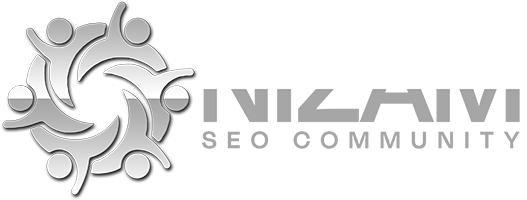What is Link Profile (Backlink Profile)?
A Link Profile—also known as a Backlink Profile—is the complete collection of all inbound links (backlinks) pointing to your website. These links are like digital votes of confidence from other websites, and they play a critical role in how search engines evaluate your site’s authority, trustworthiness, and ranking potential.
But not all backlinks are created equal. A healthy link profile balances quantity, quality, diversity, and relevance, helping improve your SEO performance across the board.
How a Link Profile Works!
A link profile isn’t just about how many backlinks you have—it’s about what kind of links they are, where they come from, and how they connect to your content. Let’s break it down:
1. Total Number of Backlinks
This is the raw count of how many external sites link to you.
However, quality outweighs quantity. A few backlinks from authoritative domains are more powerful than hundreds from low-quality sites.
2. Domain Authority & Trust
Backlinks from reputable and industry-relevant websites signal to search engines that your site is trustworthy.
Tools like Moz (DA) or Ahrefs (DR) score linking domains for SEO value.
3. Link Diversity
A strong link profile includes links from various types of sources:
- Blogs
- News sites
- Forums
- Business directories
- EDU/GOV domains
This avoids over-reliance on one link type and reduces the risk of penalties.
4. Anchor Text Variations
Anchor text is the clickable part of a link.
A natural profile includes a mix of branded, generic, exact match, and partial match anchors.
5. Follow vs. NoFollow
DoFollow Links pass SEO value (link juice).
NoFollow Links don’t pass SEO value but help maintain a natural backlink profile.
A good balance of both looks more authentic to search engines.
Uses of Link Profile in SEO
A well-maintained link profile provides several direct and indirect SEO benefits:
1. Improves Domain Authority
Quality backlinks from authoritative sites build your own site’s authority, helping you compete in organic rankings.
2. Boosts Keyword Rankings
Backlinks pointing to key pages improve their ranking for target keywords, especially when the linking context is relevant.
3. Drives Referral Traffic
Backlinks from popular or niche-relevant sites send high-intent visitors to your site, increasing engagement.
4. Uncovers Link-Building Opportunities
Analyzing your competitors’ link profiles reveals new link prospects, influencer partnerships, and content ideas.
Types of Links in a Link Profile
A comprehensive backlink profile includes a variety of link types. Here’s a breakdown of the most common ones:
1. DoFollow Links
Pass full SEO value.
Usually found in editorial content or guest posts.
Example: A tech blog linking to your SEO guide.
2. NoFollow Links
Include rel=”nofollow” to indicate search engines shouldn’t pass link equity.
Still important for building a natural profile and gaining visibility.
Example: Blog comments or press release links.
3. UGC Links (User-Generated Content)
Use rel=”ugc” to label links from forums, user profiles, or community posts.
Help prevent manipulation through comment spam.
Example: A helpful forum reply linking to your blog.
4. Sponsored Links
Include rel=”sponsored” for paid placements or affiliate links.
Ensure compliance with Google’s link policies.
Example: A paid product review linking back to your site.
5. Guest Post Links
Contextual links within guest articles you’ve published on relevant blogs.
Often high-value if done properly and ethically.
6. Image Links
When images link to a webpage, and the alt text acts as anchor text.
Great for link diversity and SEO via visuals.
Example: Clickable infographic with embedded link to your homepage.
7. Redirect Links
Old links pointing to outdated URLs but redirected via 301 to preserve link equity.
Critical during website redesigns or migrations.
8. Social Media Links
Usually NoFollow, but useful for brand signals and content discovery.
Example: A LinkedIn post linking to your new blog article.
Example of a Strong Link Profile in Action
Let’s say you own a website about digital photography. Your link profile may include:
DoFollow links from authoritative photo blogs.
NoFollow links from Reddit photography threads.
Image backlinks from infographics shared on Pinterest.
Guest post links from tech and gear sites.
Mentions in online magazines covering camera reviews.
This diverse and relevant profile tells Google your site is trusted, authoritative, and useful—boosting your ranking across multiple keywords.
Final Thoughts: Why a Strong Link Profile Matters
A Link Profile is the heartbeat of your off-page SEO. It reflects how the internet perceives and connects to your brand. Whether you’re building links, reclaiming them, or disavowing toxic ones, managing your link profile is non-negotiable for long-term SEO success.
Prioritize quality over quantity.
Keep your anchor text diverse and natural.
Aim for industry relevance and source authority.
Monitor regularly with tools like Ahrefs, SEMrush, or Google Search Console.
A well-optimized link profile improves your search rankings, domain authority, and brand credibility—making it one of the most powerful assets in your SEO toolkit.
Want to Go Deeper into SEO?
Explore more from my SEO knowledge base:
▪️ SEO & Content Marketing Hub — Learn how content builds authority and visibility
▪️ Search Engine Semantics Hub — A resource on entities, meaning, and search intent
▪️ Join My SEO Academy — Step-by-step guidance for beginners to advanced learners
Whether you’re learning, growing, or scaling, you’ll find everything you need to build real SEO skills.
Feeling stuck with your SEO strategy?
If you’re unclear on next steps, I’m offering a free one-on-one audit session to help and let’s get you moving forward.



